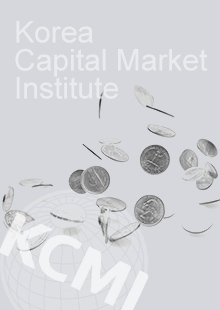Find out more about our latest publications

The KOSDAQ Stock Market: A New Paradigm for Its Position in the Korean Stock Market
Research Papers 03-09 Dec. 16, 2003
- Research Topic Capital MarketsFinancial Services Industry
- No other publications.
The KOSDAQ market is making market participants seriously doubtful of its role due to a series of financial scandals of listed companies, and subsequent loss of investors’ confidence. Thus, there is an urgent need for measures to restore the confidence on KOSDAQ for the sustainable growth of the Korean capital market as a whole. Fortunately, such discussions have started to take place recently. Nevertheless, the discussions are not yet covering comprehensive and fundamental issues concerning the KOSDAQ market.
There are two reasons behind this. The first one is that, due to the administrative structure, institutions surrounding KOSDAQ do not share common interests, and in some cases, even have conflict of interests. This means that it is very difficult to coordinate a solution for the current problems in KOSDAQ. Secondly, until now, any discussions on the development of the KOSDAQ market only focused on improving the system of exit or maintenance of listed companies (it is only very recent that limited discussions on listing standard started to take place). To solve the current problems in KOSDAQ, however, we should consider comprehensive issues such as administrative structure, governance, and macrostructure of the market. At the very moment when the merger of the cash markets and derivative market is being taken for granted, we cannot afford to delay open discussions on a comprehensive and fundamental way to improve KOSDAQ market.
What is the comprehensive and fundamental way to improve the KOSDAQ market? This is the question that this report attempts to answer. But, before going further, there are two questions to ask: firstly, “Does the KOSDAQ market need to exist in the Korean equity market? If so, what should its status be?”; and secondly, “What should the macro and micro structures of the market be in order to efficiently carry out the function corresponding to such a status?”
There are two things to note at this point. The first is that while this report was being written, the Korean government’s plan to merge the stock markets in Korea has been almost finalized. This acts as an exogenous variable to the study. In other words, it has obviated the need to state our opinion on whether KOSDAQ which acted as a new market, should remain independent of KSE (Korea Stock Exchange) or whether it should be integrated into the main market. The second is that this does not, however, mean that the discussions in this report have become meaningless. This is because this paper’s answers to the two questions have nothing much to do with the merger of the existing two stock markets.
We begin by answering the first question: “Does the KOSDAQ market need to exist in the Korean equity market? If so, what should its status be?” Ever since its inception, the KOSDAQ market has been carrying out an economic role as a new market where growth companies raised their capital. Unfortunately, however, KOSDAQ was generally perceived as a market that was secondary to KSE. Compared to other OECD countries, Korea ranks the second in terms of “venture capital investments compared to GDP” - a fact indicative of the large role of venture businesses in the economy. Furthermore, considering the high-growth potential of new growth-industries and the contribution of venture business in this sector to the national production, the role of KOSDAQ as a financing channel for the (new) growth industries is expected to grow even further. Thus, a new market (whether it is called KOSDAQ or by any other name) does need to exist in the Korean equity market.
Then, what should the status of KOSDAQ be, as it is required to continue functioning as a new market? The answer to this requires a general equilibrium approach including KSE, KOSDAQ and the third market. KOSDAQ should have an organic relationship among the three markets. Where, then, should a qualified company go to - KSE or KOSDAQ? At this point, we need to redefine the role and position of